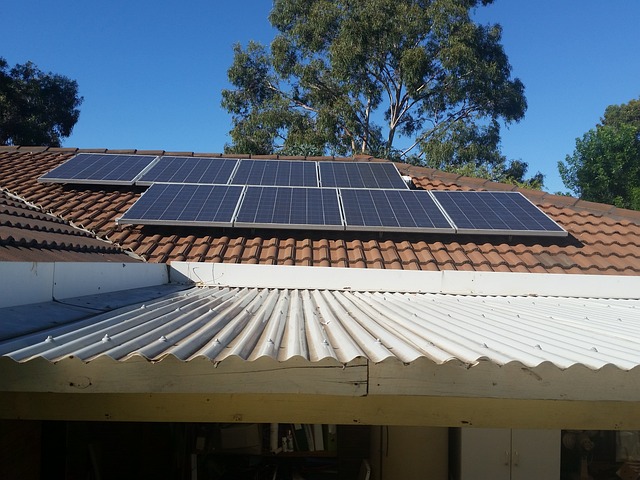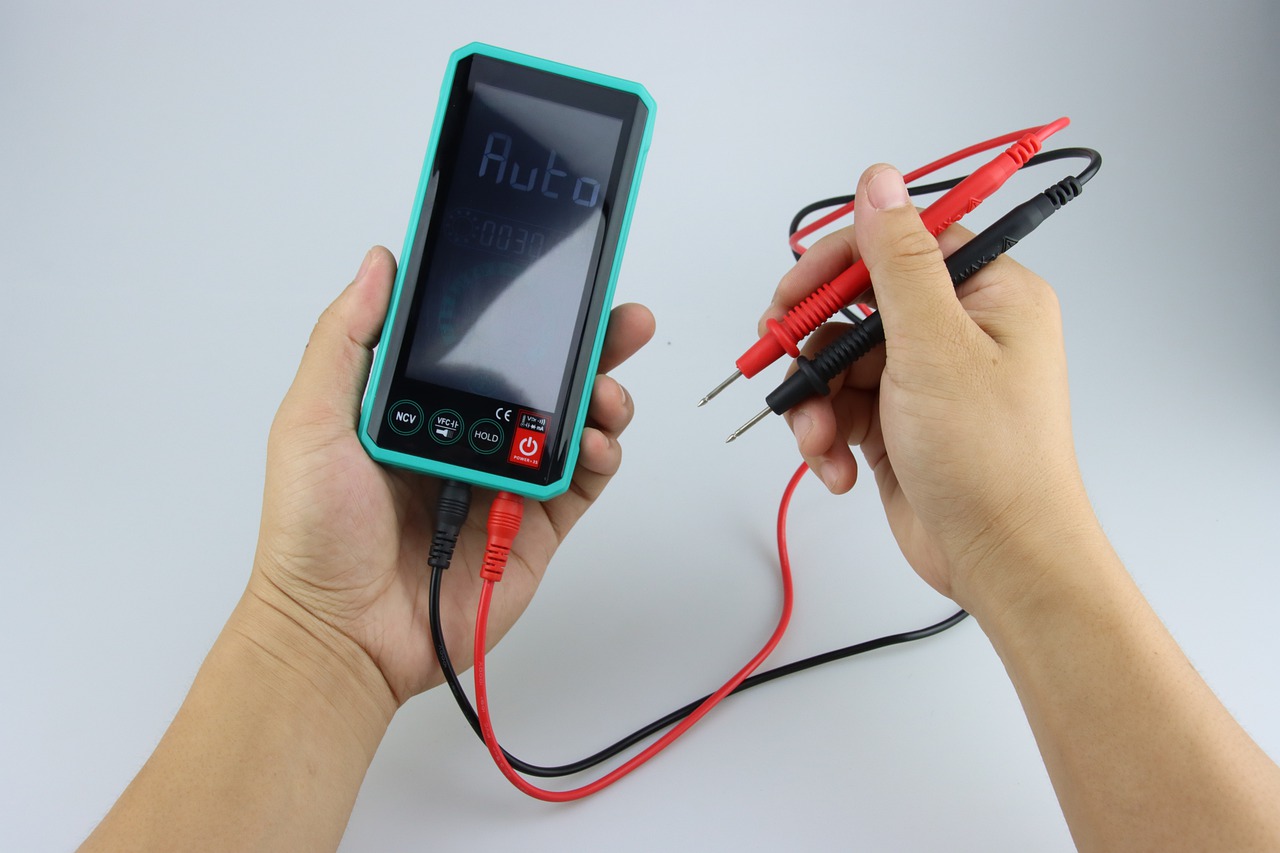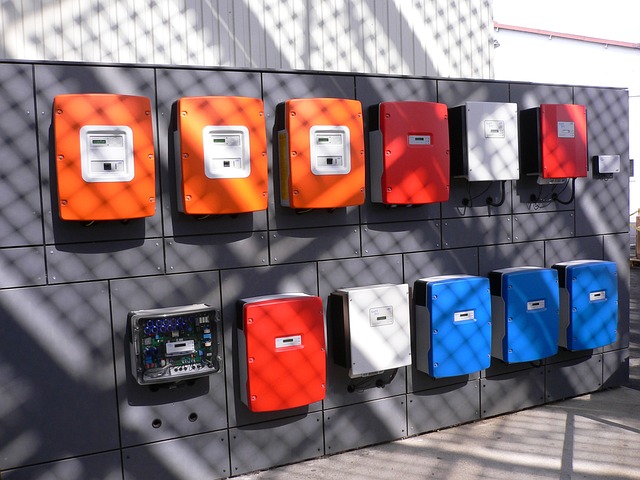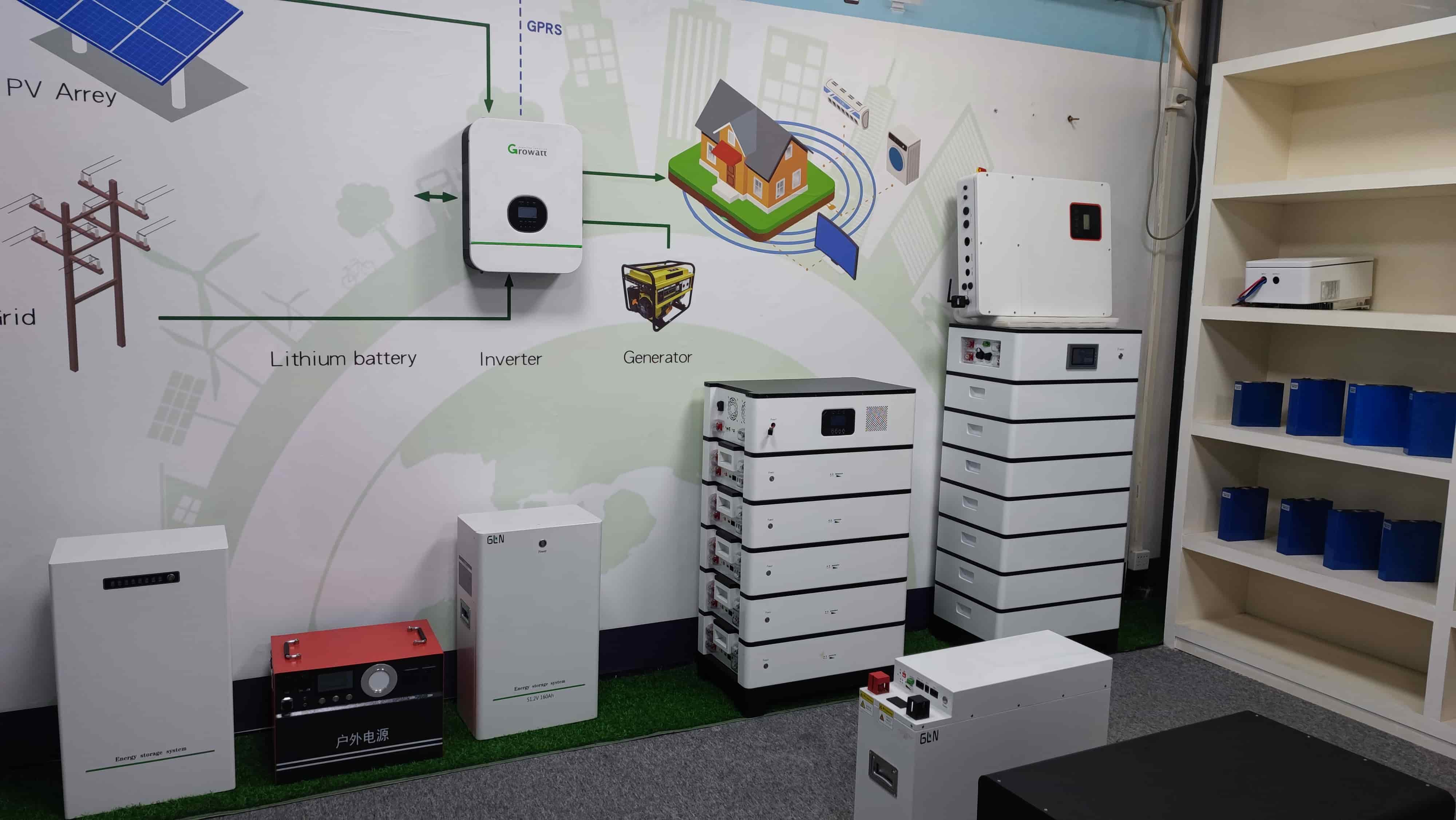Calculating Your Power Needs: How Many Lifepo4 Batteries Do You Need?

Are you looking to power your home or business with a reliable, clean energy source? If so, have you considered using lithium iron phosphate (Lifepo4) batteries for your energy needs? Calculating the power required and calculating how many Lifepo4 batteries you need can be daunting. Don't worry - this article will guide you through the process of understanding exactly what kind of power backup system is right for you.
As an Engineer in the Battery Industry, I'm here to help simplify the process of selecting and configuring Lifepo4 batteries for powering any type of residential or commercial facility. With my guidance, we'll look at some key factors that should be taken into consideration when sizing up how much storage capacity is needed. Then I'll provide actionable tips on how to get started planning out your own customized setup.
By following the steps outlined in this article, you’ll gain insight into the cost-effective benefits available from a well-designed Lifepo4 battery system plus you’ll acquire knowledge about which options are best suited to meet your specific electrical requirements. Let's dive right in!
Definition Of Lifepo4 Batteries
Lithium Iron Phosphate (LiFePO4) batteries are increasingly becoming the go-to choice for power management solutions. LiFePO4 is an advanced technology that offers superior performance and safety relative to traditional lead acid batteries. It's lightweight, efficient, long-lasting and boasts high energy density which makes it a great choice for applications ranging from electric vehicles to solar energy storage systems.
This battery technology utilizes lithium iron phosphate as its active material, providing excellent thermal stability and a low self-discharge rate. The chemistry of the cell also allows for fast charging times with minimal loss in capacity over time. This can be especially useful when you need quick access to reliable power sources like during emergencies or natural disasters.
Moreover, LiFePO4 packs have a much higher cycle life than other types of rechargeable batteries, meaning they'll last longer before needing replacement.
At the same time, these cells offer excellent protection against short circuit conditions and come equipped with built-in intelligence features such as temperature monitoring and charge balancing capabilities. All this adds up to make LiFePO4 one of the safest, most dependable options on the market today for powering your home or business operations efficiently.
Understanding Your System Requirements

When it comes to calculating your power needs, understanding your system requirements is essential. The first step in determining how many lifepo4 batteries you need is assessing what kind of energy demands your system requires. This includes the total amount of electricity usage and the peak power requirements needed to sustain the load within your system. Additionally, it’s important to consider the battery capacity that will be required for the storage and delivery of this energy.
Once you have a clear picture of what type and how much energy/power is needed by your system, then you can start making decisions about which lifepo4 batteries are best suited for your particular application. You should take into account factors such as size constraints, cost efficiency, lifespan, charging capabilities and discharge rates when selecting an appropriate battery solution for your project.
Ultimately, understanding your system's specific energy needs allows you to make informed decisions about which lifepo4 batteries are most suitable for meeting those demands. With careful consideration and planning, you can ensure that your power management strategy meets all of the necessary requirements while remaining both efficient and cost-effective.
Calculating Battery Capacity
Calculating the battery capacity needed for your power needs is an integral part of any project. Lifepo4 batteries are a popular choice and offer reliable performance, making them ideal for many applications.
To calculate how many lifepo4 batteries you need to meet your power requirements, start by evaluating the size of the inverter that will be used. This will give you an indication of the total watt-hours (Wh) required in order to supply sufficient electricity over time.
The next step is to consider the number of charge cycles expected from each battery, as this will affect its overall capacity rating.
Finally, it's important to factor in other considerations such as temperature fluctuations and discharging rates when sizing up your lifepo4 batteries.
By understanding these factors and following simple calculations, you can ensure that your system has enough juice to keep running efficiently for years to come.
Estimating Loads And Usages

Now that you understand the importance of calculating your battery capacity, it's time to move on to estimating loads and usages. To be able to calculate how many lifepo4 batteries you need, it is essential to have an accurate estimate of your power and energy needs. The following three steps will help you get a better understanding of what your usage requirements are:
Estimating Loads:
- Knowing the wattage or voltage needed for each load.
- Determining peak and average power usage.
- Calculating total power used by all devices connected at any given time.
Estimating Energy Usages:
- Analyzing typical usage patterns over a period of days, weeks, or months.
- Identifying trends in usage times and duration.
- Understanding the amount of energy consumed during different activities.
Usage Estimates:
- Utilizing historical data such as electricity bills or other records regarding past usages.
- Comparing current real-time monitoring with baseline readings from previous periods.
- Making adjustments to estimated usages based on changes in lifestyle habits or new equipment added/removed after the initial assessment was conducted.
By using this comprehensive approach when calculating your power needs, you can make more informed decisions about which type of battery best suits your individual situation and overall budget constraints while ensuring optimal performance and longevity of your system components down the line!
Calculating Battery Voltage
It's important to calculate your battery voltage requirements accurately in order to ensure that you have the correct power source for your application.
Before we get into the details of calculating a system’s voltage requirement, let’s look at an interesting statistic: LiFePO4 batteries can typically last up to 2,000 charge/discharge cycles—that’s four times more than lead-acid batteries!
When selecting and comparing different types of batteries, it is essential to understand the calculation of their voltage ratings. This table shows various methods used to measure and estimate battery voltages:
| Method | Description |
|---|---|
| Voltage Rating Calculation | Calculate based on nominal battery voltage (V) |
| Voltage Measurement Techniques | Measure with a multimeter or other device |
| Estimating Battery Voltage | Use estimated values from supplier data sheets |
Knowing how many lifepo4 batteries are needed requires understanding the total required system voltage and then dividing this by each individual cell's rated voltage. The number of cells necessary will depend on the amount of current being drawn from the system, as well as any additional components such as switches or regulators.
By taking into account these variables when calculating your battery needs, you'll be able to make sure that you have enough capacity for whatever application you're using them for.

For most systems, estimating battery voltages should be done with care; manufacturers provide precise estimates of lifepo4 cells' voltages which vary depending on temperature and load conditions. If possible, use actual measurements taken directly from devices connected within the circuit - they may give a better indication of what kind of performance to expect over time.
Ultimately, doing your research ahead of time will help you select the right type of lithium iron phosphate (LiFePO4) battery for your specific needs.
Calculating Charge Cycles
Now that you have determined the voltage of your power system, it is time to calculate the charge cycles for each of your lifepo4 batteries. This will help determine how much energy storage capacity you need in order to meet your power needs. Charge cycles refer to the number of times a battery can be discharged and recharged before its performance deteriorates significantly. A higher cycle count means more reliable performance over an extended period of use.
The first step in calculating charge cycles is determining what type of load you are using with your batteries. Depending on the type of load and its required discharge rate, you may need fewer or more charge cycles than typical applications require. For example, if you are powering motors or other devices requiring frequent high currents, then you likely need more charge cycles than normal as these types of loads tend to wear out batteries faster.
On the other hand, if your application only requires slower discharges at lower current levels, then less charging capacity might suffice.
Once you’ve established which type of load requirements apply to your project, take into account any additional factors such as temperature and ambient environment that could affect the expected life span of the battery cells.
Consideration should also be given to regular maintenance practices like balancing charges and cell replacements as part of keeping up with overall longevity goals for the entire system. With all this information taken into consideration, you should now have a better idea about how many lifepo4 batteries are needed for optimal performance from your power system.
Sizing Inverter And Charge Controller

It's time to size your inverter and charge controller. This is the most important step in calculating your power needs, so pay attention! Here are three key points to consider:
- Battery Voltage: Your battery voltage will determine how much current can be drawn from a single cell. The higher the voltage of your batteries, the more energy they can store and provide.
- Charge Cycles: Properly sized equipment will help you maximize the number of charge cycles while minimizing any damage caused by overcharging or undercharging.
- Power Requirements: You need to ensure that the inverter and charge controller is powerful enough to meet your specific power requirements for appliances, tools, and other gadgets.
To get started on sizing an inverter and charge controller, it’s best to use a calculator designed specifically for lifepo4 batteries.
This type of calculator takes into account all factors such as battery capacity, maximum discharge rate, peak load rates, etc., to accurately calculate what size components you should purchase. It also helps prevent you from accidentally purchasing too small or too large of an inverter/controller combination which could result in either not meeting your power needs or damaging your system components due to overloads.
Once you have calculated the optimal component sizes based on your specific power needs, you'll be ready to move forward with purchasing the right equipment for powering up whatever project you're working on!
Finding The Right Number Of Batteries
Figuring out how many lifepo4 batteries you need can be a daunting task. But don't worry, I've found that the most effective way of calculating the number of batteries you require is by determining your power needs and then working backward from there.
The first step in this process is understanding what kind of applications or devices you are powering with your battery system. Different kinds of devices will have different requirements for voltage and current output. Knowing these specifications helps us better understand exactly how much energy each device consumes over a given period of time so we can determine the type and size of battery that best meets those requirements.

Next, it's important to consider factors such as temperature range and expected operating conditions when selecting batteries for your application. Lifepo4 cells are generally considered to be one of the safest options for high-drain applications due to their robustness under extreme temperatures and low self-discharge rate compared to other types of rechargeable batteries.
Therefore, once we know our specific power needs, choosing the right amount of lifepo4 cells comes down to estimating the total capacity required (Ah) based on anticipated consumption patterns over any given period (days/weeks).
This calculation should take into account not only peak load but also average load throughout usage intervals - both factors significantly influence the overall power requirement which must be met in order for satisfactory performance.
By taking all these elements into consideration, you'll be well on your way toward finding out just how many lifepo4 batteries are needed for your project. With careful analysis and planning, you'll be able to make sure every aspect of your operation runs smoothly while ensuring optimal safety and reliability in whatever environment they may find themselves in.
Factors To Consider When Choosing A Battery
Choosing the right lifepo4 battery for your power needs is an important decision. You must take into account several factors, such as capacity, charge cycles, inverter size, and voltage rating.
Capacity refers to how much energy a battery can store. A higher capacity means that more electricity is available when needed. To determine the capacity you need, add up all of your expected loads in watts and multiply by 2 or 3 times to be safe. This will give you the total amount of watt-hours (Wh) required from the battery pack each day.
The number of charge cycles should also be taken into consideration when selecting a battery. The more charge cycles you get out of a single cycle, the longer your battery will last. A typical Lifepo4 cell has over 2000+ deep discharge/charge cycles before it begins to degrade significantly in performance and capacity.

Inverter size and voltage rating are also important considerations when choosing a lifepo4 battery system. An inverter must have enough current output capability to match your power needs; otherwise, some devices may not receive enough power once connected to the system. Additionally, batteries generally come with different voltage ratings - usually 12V or 24V - which determines what kind of electrical systems they will work with best.
It's essential to carefully evaluate these factors prior to making any purchase decisions so that you select the most suitable lifepo4 battery for your particular needs. Doing this research upfront ensures greater reliability and better overall performance from your new system now and down the road!
Benefits Of Lifepo4 Batteries
Did you know that Lifepo4 batteries have a lifespan of five times longer than their lead-acid counterparts? This means they can provide consistent power for many years without needing to be replaced. With this kind of long-term reliability, it's no wonder why so many people choose them as their go-to source of energy.
The benefits of these batteries don't stop there though - they are also incredibly energy efficient. They deliver more usable capacity from the same size and weight package than other types of battery systems, making them an ideal choice for those who need reliable power but don't want to lug around bulky equipment.
Not only do Lifepo4 batteries provide superior energy efficiency, but their lightweight design makes them easy to transport and install in any application. Additionally, since they are made with environmentally friendly materials, they are much better for the environment compared to traditional lead-acid solutions. So if you're looking for a sustainable way to power your devices, look no further!

Lifepo4 batteries offer significant advantages over other kinds of batteries due to their longevity, energy efficiency, lightness and environmental friendliness. Whether you’re powering small electronics or larger industrial applications, investing in lifepo4 is sure to bring you great returns in terms of performance and cost savings in the long run.
Pros And Cons Of Other Battery Types
When it comes to power needs, there are several types of batteries available.
- Lead-acid batteries have been around the longest and have proven reliable but they also tend to be heavier than other battery types.
- Nickel-cadmium batteries offer good performance at a lower cost but can suffer from the memory effect which reduces their capacity over time.
- Lithium-ion batteries provide excellent energy density and require minimal maintenance, however, these often come with a higher price tag.
- Nickel-metal hydride batteries are another option that offers good performance for moderate costs, although they may not last as long as some other options. Finally, alkaline batteries are probably the least expensive choice but don’t typically store charge for very long.
Ultimately, when calculating your power needs you need to consider all the pros and cons of each type of battery before making a decision on what is best for your application. Factors like size, weight, cycle life and cost should all be taken into account when determining how many lifepo4 or any other type of battery you need in order to meet your specific requirements.
With careful consideration and an understanding of your own unique circumstances, you can make sure you get the right amount of power storage - without breaking the bank!
How To Install Lifepo4 Batteries
Properly installing lifepo4 batteries is paramount for power management success. Preparing the right installation techniques, considering important installation considerations and implementing safety measures are key to guaranteeing a successful setup.

First, it is essential to prepare your battery installation correctly by gathering the necessary tools and materials prior to starting the job. A few items you may need include wire cutters, electrical tape, screws/nuts/bolts, drill bits, pliers and wrenches depending on your specific project. Additionally, make sure you have enough room in the area of installation for all parts that require mounting or wiring together.
Next, you must consider various installation considerations such as making sure no wires touch each other when connecting them; using circuit breakers if needed; avoiding any areas with excessive moisture or heat; securely mounting the battery in its designated space; properly grounding cables; and regularly checking connections during usage (battery terminals should not move). It is also recommended to use additional insulation protection around exposed cables in case of contact with metal objects.
Finally, installing safety measures while working with these types of batteries is an absolute must! This includes wearing protective gear like goggles and gloves at all times as well as having a fire extinguisher nearby just in case of an emergency involving sparks or flames caused by short-circuiting electricity. Furthermore, be aware that Lithium Iron Phosphate cells can overheat so ensure proper ventilation throughout the entire process.
In summary, following the steps mentioned above will help guarantee the correct and safe installation of Lifepo4 Batteries ensuring optimal performance from your power system for years to come!
Maintaining Lifepo4 Batteries
Proper maintenance and care of these batteries are essential in order to maintain their efficiency and maximize their lifespan. In this section, I will go over some basic tips on how to properly maintain and store your lifepo4 batteries.
The first step in maintaining your lifepo4 battery is proper storage. It’s important not to store them at temperatures below freezing or above 65°C (149°F). Additionally, try to keep them away from direct sunlight as much as possible, as too much heat can reduce the life of the battery significantly.
| Temperature Range | Storage Advice |
|---|---|
| Below 0°C (32°F) | Avoid storing here |
| 0-65°C (32-149°F) | The recommended range for storage |
| Above 65°C (149°F) | Avoid storing here |
Charging correctly is also key when it comes to extending the life of your lifepo4 battery. The recommended charge rate should be between 1/10th and 1/20th of the capacity of your particular model so make sure you double-check what this rate should be before charging!
Also, avoiding full discharges and deep cycles will help extend the lifepo4 battery lifespan significantly. Finally, consider investing in an appropriate charger that can trickle charge if necessary - this way you won't risk damaging your battery due to overcharging or undercharging.
Maintaining lifepo4 batteries doesn't have to be hard work - just follow these simple steps and you'll get years out of each one! Remember: temperature control, correct charging rates and regular preventative maintenance all play a big role in keeping your batteries running optimally for longer periods of time.
So take the time now to learn about proper battery care it’ll pay off in the long run!
Green And Sustainable Power Solutions

With the power needs of many homes and businesses increasing, it is important to consider renewable energy sources as a viable option for powering your home or business.
According to recent studies, nearly 20% of electricity in the US comes from renewable sources such as solar, wind, hydroelectric, geothermal and other green energy sources. This means that if you are looking to reduce your carbon footprint while still having access to reliable power, these sustainable solutions are an ideal choice.
So I recommend considering all available options when making decisions about what type of energy source will best meet your needs. Solar panels offer an efficient way to generate power without depending on traditional grid-based electricity generation methods. Wind turbines can provide another dependable source of clean energy with minimal environmental impact. Hydroelectricity is yet another great alternative that produces no emissions and requires very little maintenance. Geothermal systems also have low operating costs compared to traditional heating and cooling systems.
These days there are plenty of cost-effective ways to go green and stay powered up! By investing in one or more of these renewable energy sources, you can ensure maximum efficiency and reliability for your home or business's operations—all while reducing your overall carbon footprint at the same time. With responsible research and expert advice, anyone can make their own contribution towards creating a healthier environment for future generations.
Safety Guidelines
If you're looking to power up with lifepo4 batteries, it's important to understand their safety requirements. From installation and maintenance to sustainable power and inverter safety, these guidelines will help keep your energy system safe.
When installing a lifepo4 battery, make sure the location has proper ventilation and is away from any sources of heat. Check that all connections are secure and properly insulated before connecting an AC charger or DC inverter. Be aware of potential risks associated with short-circuiting, overcharging, and discharging beyond recommended limits.

Ensuring long-term reliability requires regular maintenance checks for corrosion on terminals or connectors as well as inspecting cables for wear or damage. If problems arise during the inspection, contact a qualified electrician for assistance. Additionally, when using multiple batteries in parallel configurations be sure they match in terms of capacity, voltage rating, manufacturer brand, age/cycle count and series/parallel setup code if applicable.
For sustainable power systems such as solar photovoltaic (PV) panels ensure all components including charge controllers, PV array junction boxes, and fuses/breakers are properly sized according to the intended load demand. When utilizing an inverter always refer to its user manual for installation instructions specific to your model type and size; improper installation can lead to serious injury or death due to electrocution hazards.
Safety should be the top priority when powering up with lifepo4 batteries - following these guidelines helps protect users against potentially hazardous conditions that could cause irreparable harm or disaster down the road. By taking preventative measures now you'll save yourself time and money later while enjoying peace of mind knowing your energy system is reliable & safe!
Conclusion
Since working in the energy storage battery industry, I'm always asked: how many lifepo4 batteries do you need? My answer is that it depends on your individual system requirements. After assessing the voltage and capacity needs of your particular setup, as well as estimating loads and usages, you can determine the right number of lifepo4 batteries for your project. Once installed, these renewable energy sources will provide a sustainable and green power solution while also ensuring safety guidelines are met.
Lifepo4 batteries may seem intimidating at first but with proper maintenance, they can last for many years to come. With the help of an experienced professional, calculating your power needs doesn't have to be difficult or time-consuming. As long as you take the time to understand your own unique setup in terms of voltage and capacity needs then you'll know exactly how many lifepo4 batteries to install.
In conclusion, when looking into powering solutions for yourself or your business, knowing how many lifepo4 batteries you need is essential. By understanding your own system requirements and taking necessary steps like calculating battery capacity, estimating load usage and more, you’ll be able to find the perfect amount of lifepo4 batteries needed for reliable operation.
